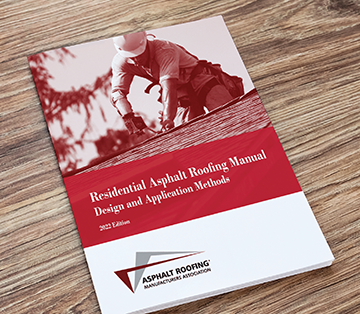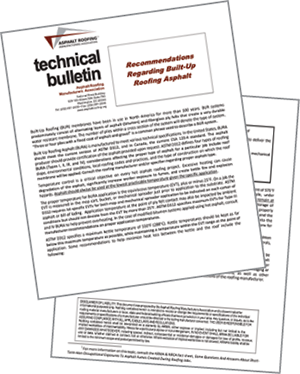

Earlier this year, the Asphalt Roofing Manufacturers Association updated its residential asphalt shingle manual. If you design, procure or install asphalt shingles, you should be aware of ARMA’s guidelines.
ARMA manual
ARMA’s Residential Asphalt Roofing Manual—Design and Application Methods, 2022 Edition updates and supersedes the previous edition of the manual published in 2014. Earlier editions were published in 2006, 1997, 1993, 1988 and 1984.
The manual primarily is intended to provide practical information for those who sell and install residential asphalt roofing products. For those who specify and distribute residential asphalt roofing products, it serves as a dependable reference for product selection and application.
The manual specifically states it represents manufacturers’ views about recommended application procedures. However, individual asphalt roofing product manufacturers may have differing instructions for specific products. For example, the manual recommends asphalt strip shingles be applied across and diagonally up a roof’s surface and cautions against straight-up, or “racked,” application. However, it also indicates some asphalt shingle products are specifically designed to be installed in a racked fashion, so you should consult manufacturers for instructions specific to their products.
The manual provides general information about residential asphalt roofing, including how products are manufactured, design considerations, measuring and estimating how much material will be required, job preparation and roof deck preparation. For example, the manual indicates most asphalt shingle roof system installations will require anywhere from 2% to 10% excess shingles because of trim waste. The amount of trim waste depends on a roof’s configuration, including the number of valleys, dormers, hips and ridges, and roof system penetrations.
New to the manual is a cautionary statement addressing sealed roof decks where strips of self-adhering membrane material are applied over deck panel joints before underlayment application. The manual indicates sealing roof decks can affect ventilation performance of underlying attic space.
Separate chapters address the application of laminated shingles in new construction, three-tab strip shingles in new construction and shingles in reroofing. For example, the manual recommends that if a roof surface is broken by a dormer or valley, shingle application should start from a rake and work toward the break. If a roof surface is unbroken with no dormers or valleys, starting at the rake most visible from street level is recommended. For hip roofs and where both rakes are equally visible, starting from the center of the roof area and working toward both sides is recommended.
Additional chapters address flashings at walls, chimneys and penetrations, and hips and ridges. New to this edition are basic guidelines for rooftop solar mounts. The manual recommends flashing flanges be incorporated into rooftop solar mount penetrations that can be shingled in; caulks and sealants should not be relied upon to prevent water infiltration; and flashing penetration designs should withstand freeze-thaw cycling and prevent water infiltration resulting from ice dams. Also, wherever possible, rooftop solar mount-related wiring or piping penetrations through a roof surface should be avoided; routing wiring or piping over a roof edge is preferred. The manual also indicates manufacturers should be consulted for more detailed instructions.
Also, separate chapters provide information about nonadhered and self-adhering roll roofing, inspection of completed jobs, and roof system care and maintenance.
ARMA also publishes
a series of technical
bulletins addressing
specific residential,
polymer-modified
bitumen and built-up
roofing issues. These
can be accessed at
asphaltroofing.org/resources.
Closing thoughts
The updated ARMA manual represents manufacturers’ consensus opinions of good roofing practices applicable to asphalt shingles and asphalt roll roofing. However, the manual notes it does not address the only possible methods to obtain satisfactory roof system performance.
During my review of the manual, I noticed it makes no mention of synthetic underlayment products, which some ARMA members supply and are in widespread use in the residential asphalt shingle market. When speaking with ARMA representatives about this omission, they acknowledged asphalt shingle manufacturers’ opinions about synthetic underlayment products vary, so you should seek guidance from specific asphalt shingle manufacturers.
The manual can be purchased by accessing ARMA’s website, asphaltroofing.org.
MARK S. GRAHAM is NRCA’s vice president of technical services.
This column is part of Research + Tech. Click here to read additional stories from this section.



